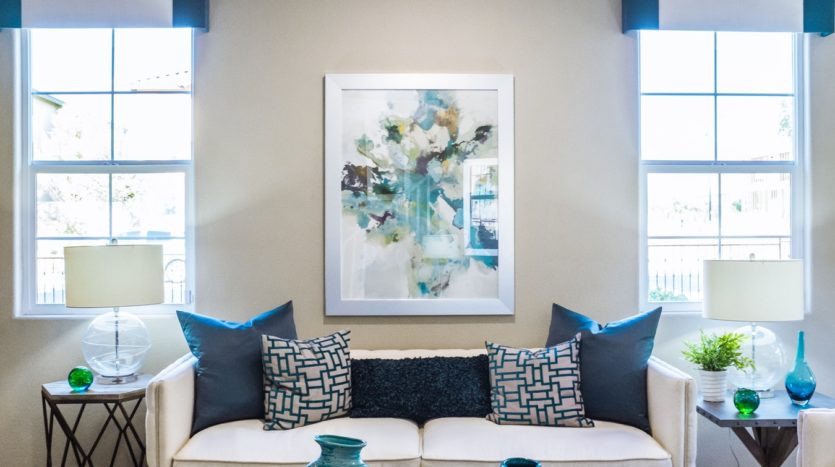Property owners in Phoenix benefit from the city’s rising popularity among young professionals, students, and travelers. While Phoenix has always had a steady population of families in the suburbs, the last few years have seen an influx of millennials into the area. Lower than average homes prices, a welcoming community culture, and a bursting education push, make Phoenix an ideal spot for new businesses and new starts.
To take advantage of the hot rental market, property owners should first consider whether their properties would be best served as furnished or unfurnished listings. Read on to explore the pros and cons and decide which style might attract your target renter.
Pros of a Furnished Property
Almost all rentals come equipped with large appliances that might be unreasonable for a renter to own, such as stoves, refrigerators, dishwashers, and laundry units. However, furnished units provide a homier experience for tenants, including extra furniture items such as couches, dining room sets, beds, dressers, and even kitchen utensils or cookware.
As a property owner in Arizona, this kind of furnished unit would be ideal for short-term guests or students who want a move-in ready space. For travelers or temporary employees staying on location in Phoenix, a furnished property means they can avoid having to supply their own furniture and cookware. Similarly, young people and students who might not own their own furniture yet would prefer to rent such items rather than invest in buying.
A furnished property means you can charge much more in rent to cover the cost of upkeep. You can also take advantage of the Phoenix VRBO trend and market your property specifically to travelers seeking to soak up Arizona sun.
You might also benefit from shorter periods between tenants in the peak season because renters can move into a ready space immediately once the maintenance is completed.
Cons of a Furnished Property
On the other hand, furnishing your property increases the capital you’re investing in the property, both up-front and over time. Every few years (or possibly sooner), the furniture will need to be replaced. You will also need to perform more frequent and seasonal maintenance between tenants to keep the property clean and in working order.
Worst-case scenario, some short-term tenants might do more damage than others, and the higher rent price might not cover the costs of upkeep for a furnished unit. Short-term tenants can also be harder to find; during peak vacation season, it might be easy to keep the property full of vacationers or temporary residents, but it could be difficult to keep the property occupied outside of those winter months.
Overall, furnished properties are not for the new property owner because of the high overhead and high risk, but experienced property owners might reap high rewards.
Pros of an Unfurnished Property
Unfurnished properties are by far the more common among long-term tenants who are looking to make a space their own. Renters can bring in their own furniture and design their space to their liking. This means that you, as the property owner, do not need to pay for furnishings up front or pay for replacement furniture down the road.
With more working professionals moving into the Phoenix area, there is a market for long-term tenants. If your property is in a suburban area like the friendly, up-and-coming neighborhood of Arcadia, having an unfurnished space might be to your advantage.
With an unfurnished property, maintenance needs are less frequent and easier to complete. When a tenant moves out, they take everything with them, which means refinishing the flooring, repainting rooms, and other major upgrades won’t require working around furniture. If you’re a new landlord, an unfurnished property is much easier to manage and afford.
Cons of an Unfurnished Property
Long-term tenants might keep a lease for a year, but an unfurnished apartment means that the monthly rent price might have to be lower to compensate.
Just because a renter provides their own furniture, also doesn’t mean you avoid all property damage. Renters might still cause costly damage to existing appliances or floors.
Many people come down to Phoenix for solely the beautiful winter months. Often referred to as “Snowbirds,” these folks road trip down in their cars once a year and usually don’t want to bring too much with them aside from a couple of suitcases. If you have an unfurnished property, you’ll miss out on revenue to be made from snowbirds because chances are, they won’t be towing a trailer full of furniture.
Final Thoughts: Should You Furnish Your Rental Property?
To choose between furnishing a rental property or keeping it unfurnished, you must be aware of your location in Phoenix and your ideal tenant.
If you’re looking for long-term tenants who will sign a lease up to an entire year, you likely will want to keep an unfurnished apartment. Similarly, if you can’t afford the upfront cost of a furnished apartment or the high cost of maintenance, an unfurnished apartment is your best option.
However, if you’re looking to draw the vacationer or student crowd of temporary tenants, furnishing a stylish apartment might draw in more revenue. It’s also ultimately important to consider your own experience as a property owner: do you think you can handle the high demand of a furnished apartment, or would you prefer the relative ease of managing an unfurnished unit? No matter your decision, contact a professional to get the best property management in Phoenix!


